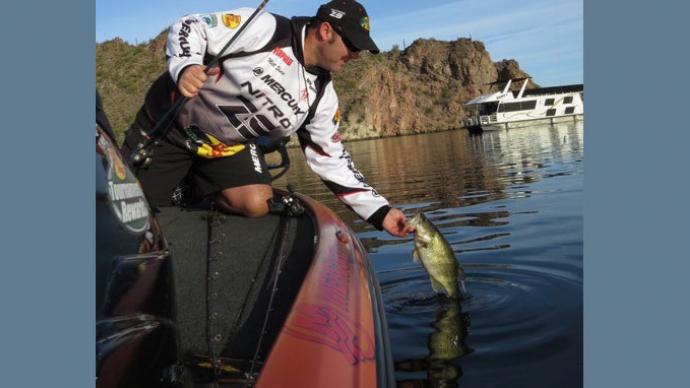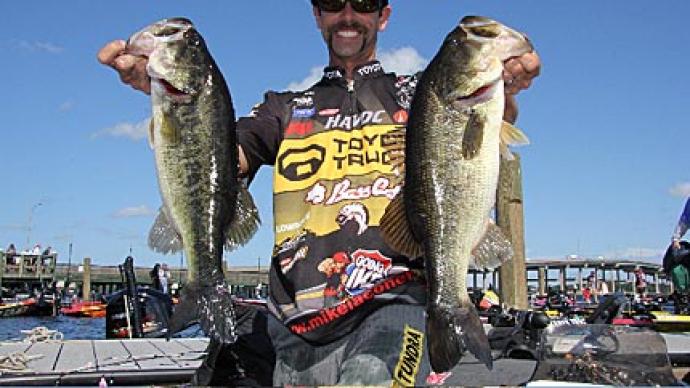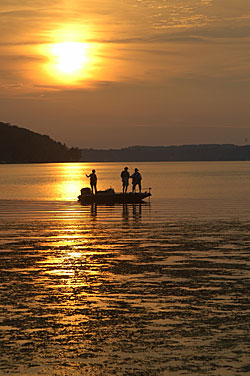
Summer is when people spend a lot of time fishing and hopefully catching. Whether it’s your first fish, your biggest fish, or you want a nice image of your trophy. You can follow a few simple rules to make better fish images.
One simple rule is to take the picture or image right after catching the fish. The classic dead fish picture just doesn’t get it. Fish look better when they’ve just come out of the water. If you’re into catch and release, you may want to quickly snap a good shot to get the fish back in the water.
Regardless, immediately after you catch the fish is the best time to try and capture a good image. Look at the fish quickly to determine if it has a good and a bad side. Sometimes the fish may have lost some scales or show signs of a previous battle that makes one side better than the other.
Make sure the fish is as clean as possible. Remove all blood, and clean off any dirt on the fish, so it sparkles. Splash some water on the fish or dip him in the water again before taking the photo.
Women and children often aren’t particularly fond of handling a fish, especially if they’re still alive. A device like a Fish Handler helps them hold the fish, will put them at ease, and make holding the fish easier.
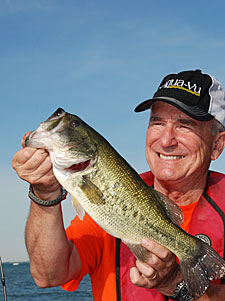
Positioning your subject and the fish is critical. Hold the fish on the side of the gills opposite the camera. Gently cradle the fish from underneath with your other hand, especially if it is large. Have your subject face into the sun. Usually, you want them to remove their sunglasses so you can see their smiling face. If they’re wearing a hat or cap, have them tilt it back slightly, so the sun is on their face. Be ready with the camera so your subject isn’t holding a heavy fish for a prolonged period and keeping it out of the water for long.
Have your subject hold the fish sideways to the camera horizontally, vertically, or somewhere between. Have them turn or tilt the back of the fish, so it catches the sun. Your subject can either look at the camera or look at the head of the fish. I like to tell people to elevate the fish to head high and look at the very nose of the fish because you can see their face then. Shoot some images of them doing both. Try kneeling and shooting up or stand on a cooler and shoot down on your subject instead of just straight on.
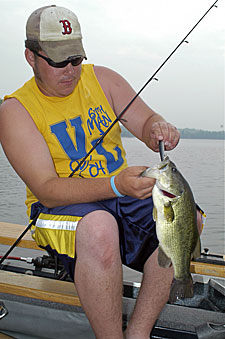
I commented on a friend’s fish image recently and that he needed to learn how to use a flash. The subject’s face was dark, and you couldn’t tell who it was. His response was, “It was high noon with the bright sun!” That is precisely the time when you need to use a flash. High, mid-day sun creates harsh shadows, and the best way to eliminate those is by using a fill flash. If you have a point–and–shoot camera, it will tell you it doesn’t need a flash because there is enough sunlight. So, you need to fool it into thinking it’s dark by putting your finger over the light sensor. That way, you can override it, and it will flash. If you’re using a quality digital SLR and the standard flash on the camera, it may be too bright and wash out your images. A trick is to put a tissue or handkerchief over the flash to act as a diffusion filter and create the soft fill light you want.
The opposite effect is to have your subject with the sun at their back to create a silhouette effect. Your camera will read off different portions of the image and average the amount of light exposing the image by favoring the bright background rendering your subjects dark. With my digital SLR, I set the metering on matrix, which takes readings from five different image parts to accomplish this result.
Make sure you fill the frame with the fish and your subject. Get in close and make sure that your subject and the fish are the dominant portion of the image. Be very aware of the horizon. Even in major outdoor magazines, I've seen images where the horizon is tilted so severely that Columbus would have never made it to America if the water were actually like that! Make sure the horizon is straight before you touch the shutter.
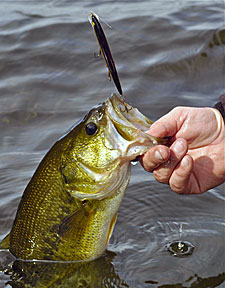
Besides the fish, take images of the equipment used to make the catch or incorporate them into your images. My friend likes to call those “detail shots.” Stick the lure in the fish’s mouth and take a close-up of just the fish’s head. Or maybe of just the fish’s eye or tail. Leave the fish in the water with the lure in its mouth and take some shots. Let the fish rest and then tighten up on the line. You can often get the fish to jump, and if you’re ready, you can get a spectacular action shot.
Lay out a selection of lures that were the most productive that day. Or make sure you get the equipment used to catch a trophy. Gets some shots of the boat, the habitat, and your buddy in the act of fishing or picking a backlash. Take way more images than you think. With today’s digital cameras, they’re free.
Stage an action shot. Get your buddy to lift a fish at the side of the boat. Count 1, 2, 3, and have him lift the fish so water is spraying off the fish. Use a faster shutter speed to freeze the water, like 1/500th of a second. You can tie the boat off to the dock and shoot the images on the opposite side of the boat. No one will know that you weren’t out on the water.
You can also stage a netting shot. Have one angler scoop the fish while another brings it to the net. Make sure you coordinate the lift and have the fish sideways in the net. Or have one person lipping the fish while another looks on. Get creative.
The best time to take great fish images is during what photographers call “The Magic Hour,” the hour just after sunrise or before sunset. The light is soft and glowing then and reflects the start of a great day or the end of a memorable one. Use your flash to fill the image's foreground and take advantage of the spectacular background.
With today’s digital imaging post-processing programs, you can do just about anything you want to images, but starting with a good one helps. Why not just take a good image, to begin with.


